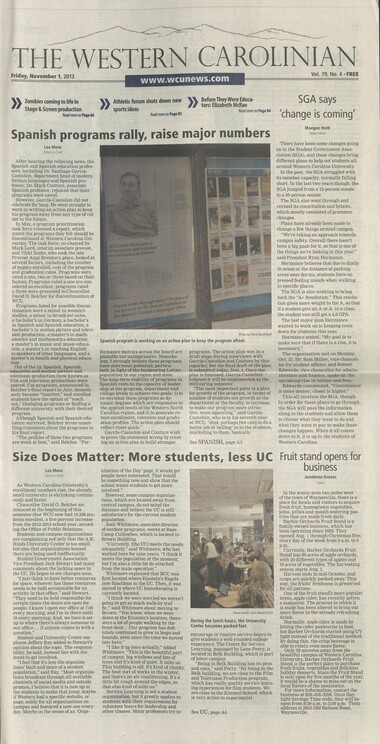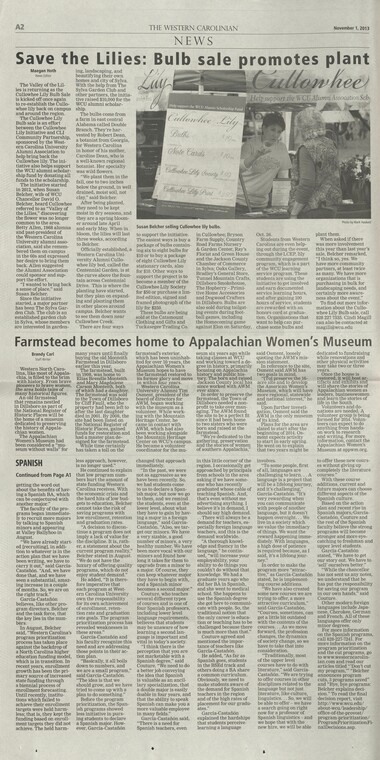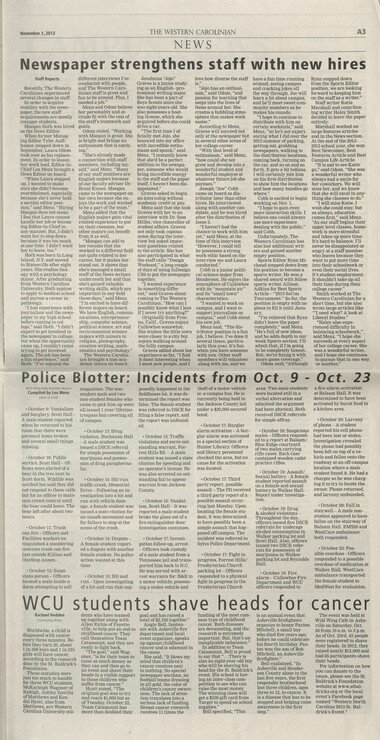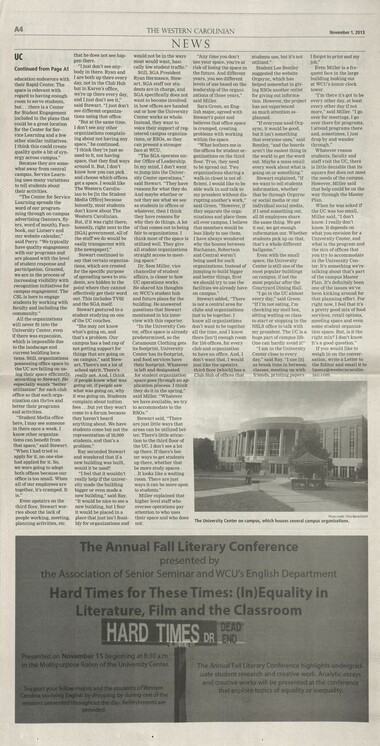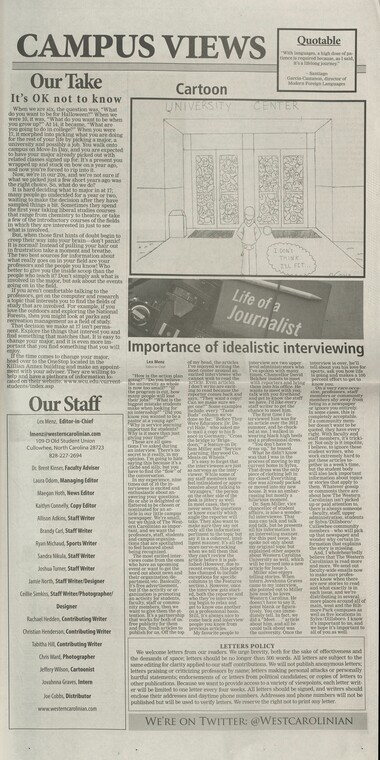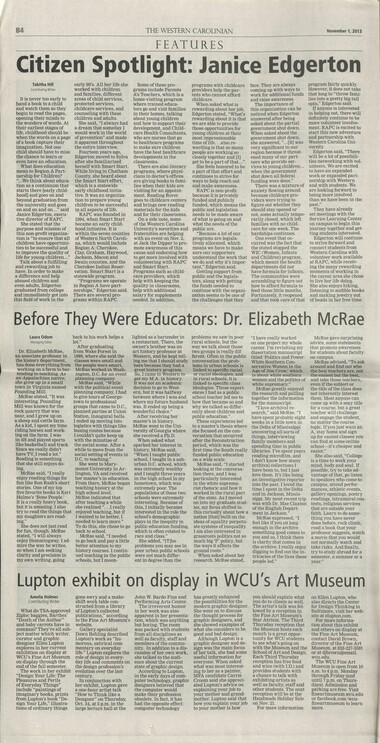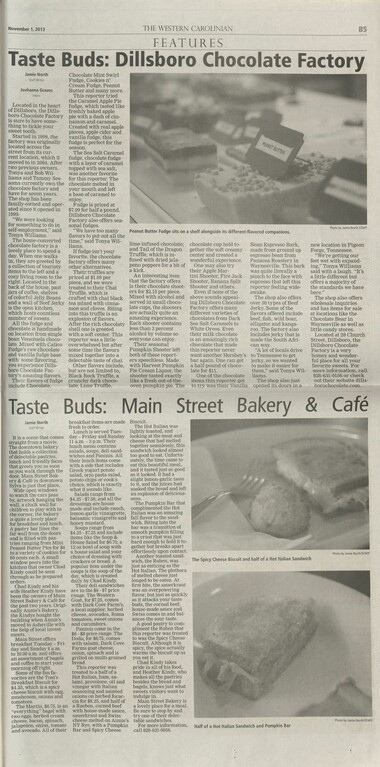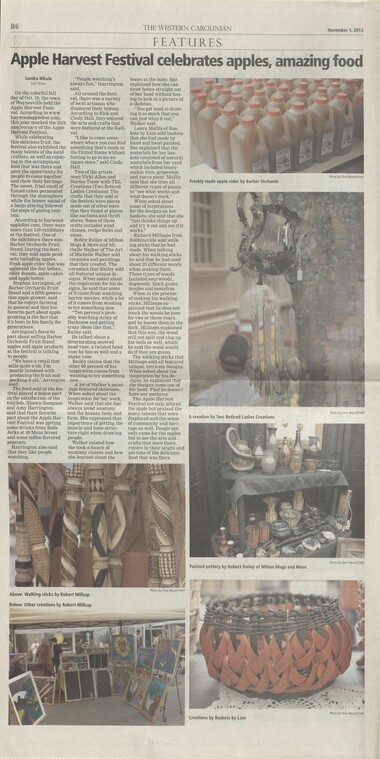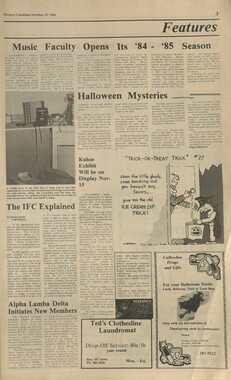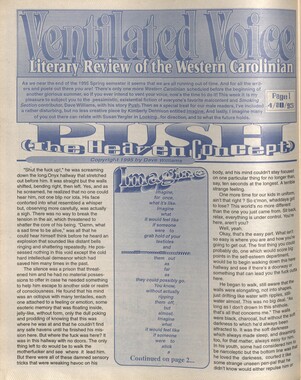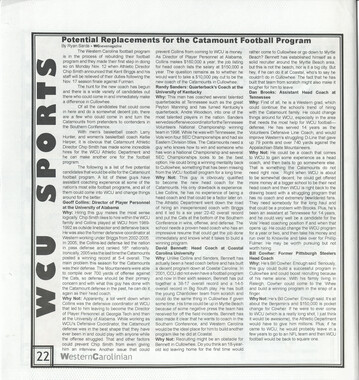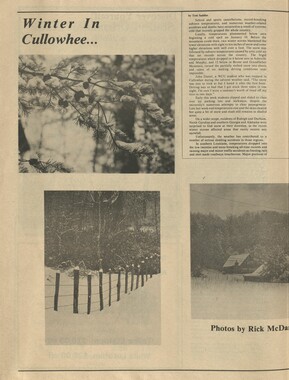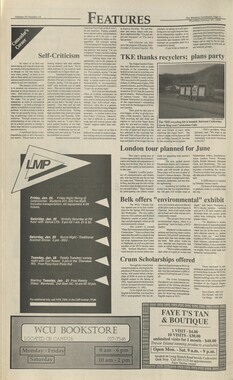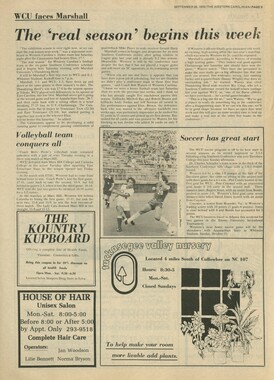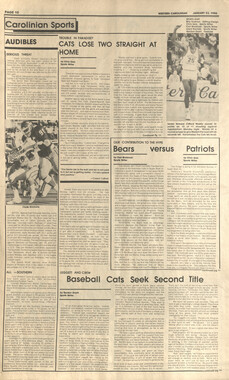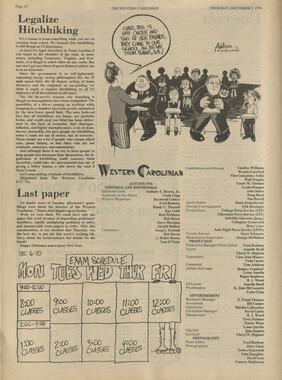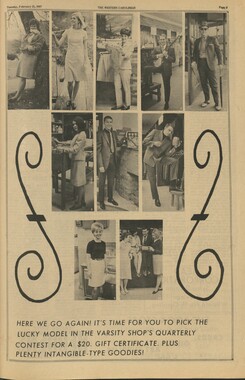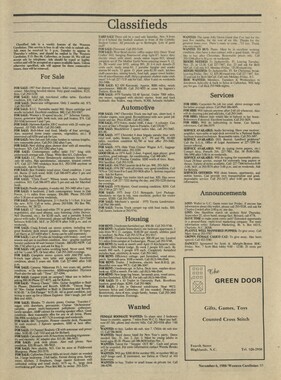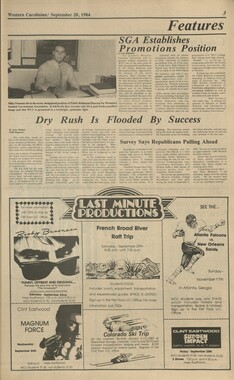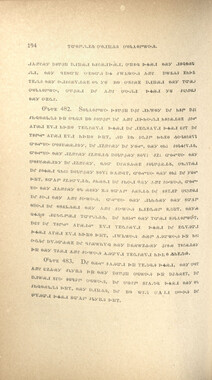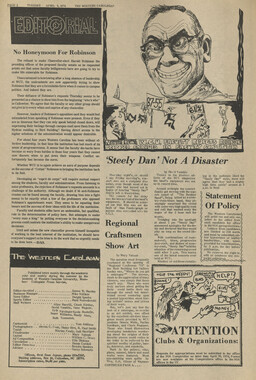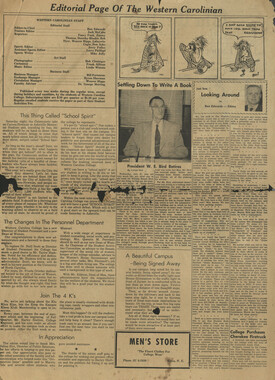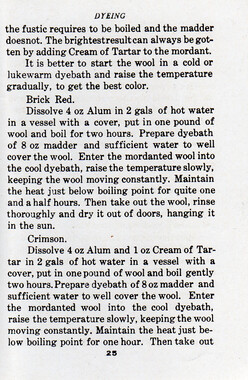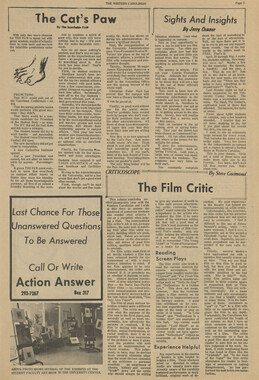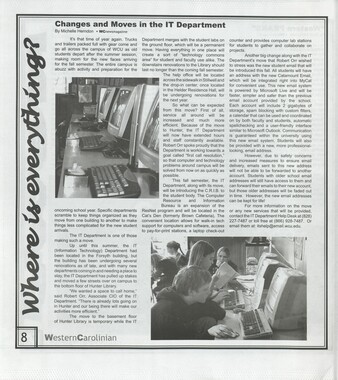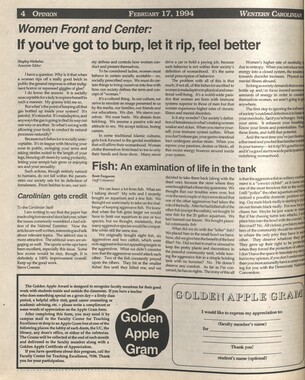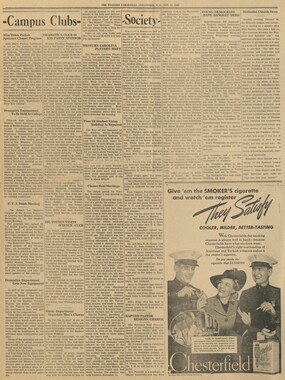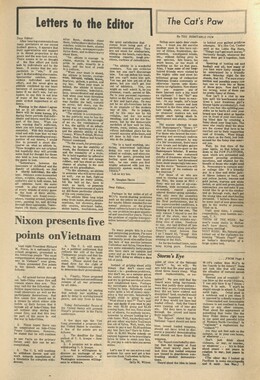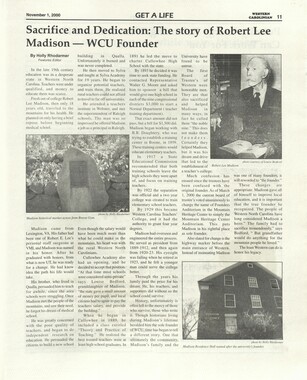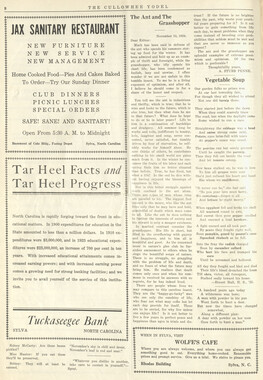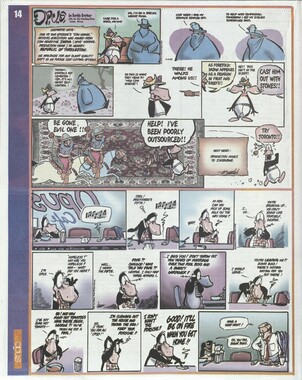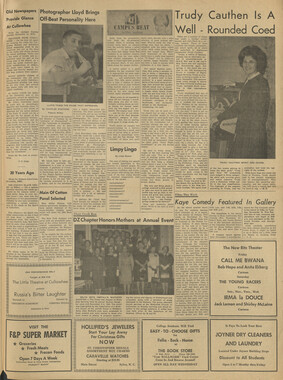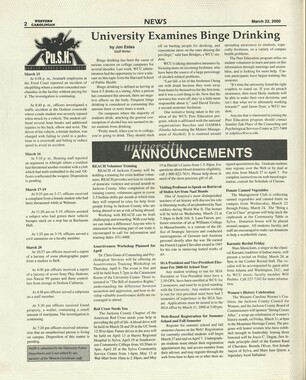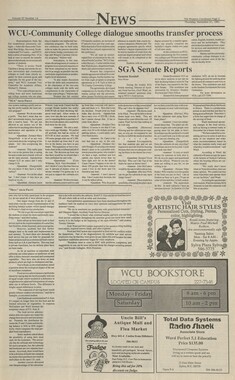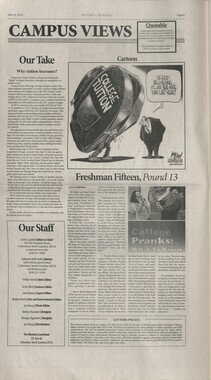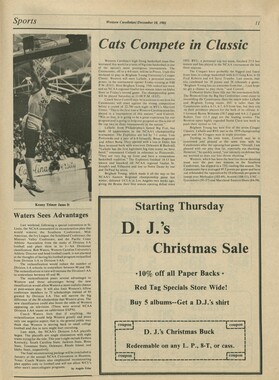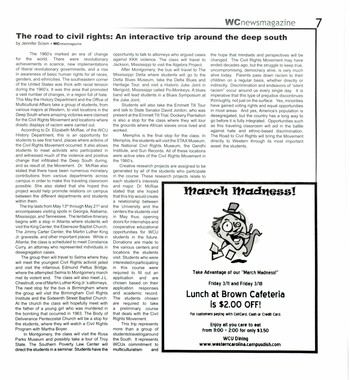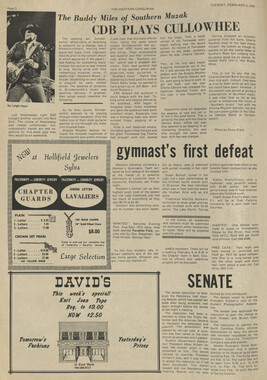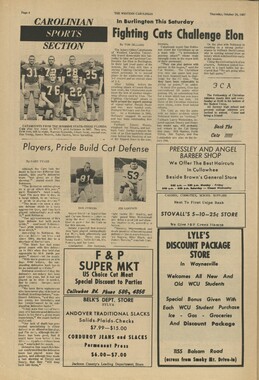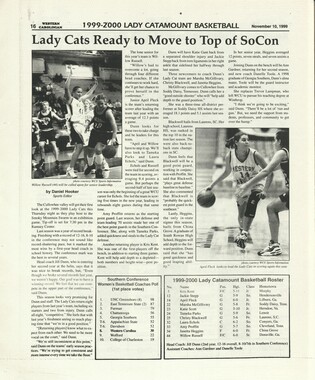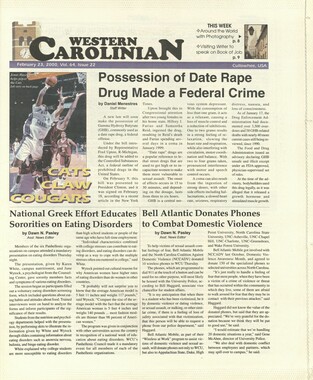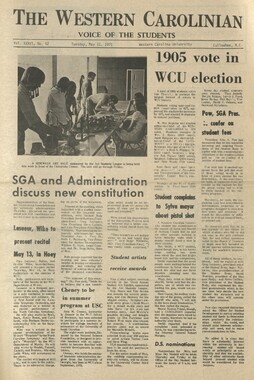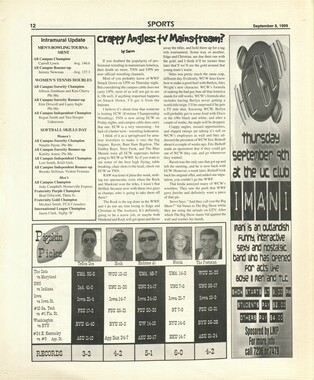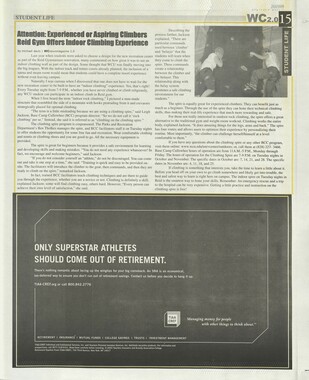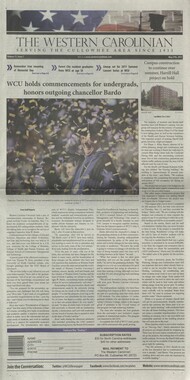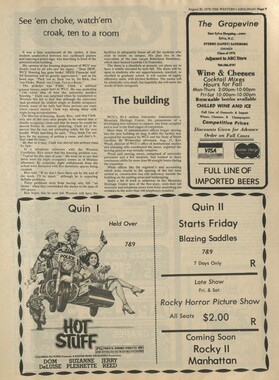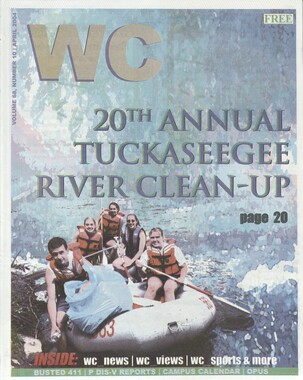Western Carolina University (21)
View all
- Canton Champion Fibre Company (2308)
- Cherokee Traditions (291)
- Civil War in Southern Appalachia (165)
- Craft Revival (1942)
- George Masa Collection (135)
- Great Smoky Mountains - A Park for America (2901)
- Highlights from Western Carolina University (422)
- Horace Kephart (941)
- Journeys Through Jackson (159)
- LGBTQIA+ Archive of Jackson County (85)
- Oral Histories of Western North Carolina (314)
- Picturing Appalachia (6798)
- Stories of Mountain Folk (413)
- Travel Western North Carolina (153)
- Western Carolina University Fine Art Museum Vitreograph Collection (129)
- Western Carolina University Herbarium (92)
- Western Carolina University: Making Memories (738)
- Western Carolina University Publications (2491)
- Western Carolina University Restricted Electronic Theses and Dissertations (146)
- Western North Carolina Regional Maps (71)
- World War II in Southern Appalachia (131)
University of North Carolina Asheville (6)
View all
- Allanstand Cottage Industries (62)
- Appalachian National Park Association (53)
- Bennett, Kelly, 1890-1974 (1463)
- Berry, Walter (76)
- Brasstown Carvers (40)
- Carver, George Washington, 1864?-1943 (26)
- Cathey, Joseph, 1803-1874 (1)
- Champion Fibre Company (233)
- Champion Paper and Fibre Company (297)
- Cherokee Indian Fair Association (16)
- Cherokee Language Program (22)
- Crowe, Amanda (40)
- Edmonston, Thomas Benton, 1842-1907 (7)
- Ensley, A. L. (Abraham Lincoln), 1865-1948 (275)
- Fromer, Irving Rhodes, 1913-1994 (70)
- George Butz (BFS 1907) (46)
- Goodrich, Frances Louisa (120)
- Grant, George Alexander, 1891-1964 (96)
- Heard, Marian Gladys (60)
- Kephart, Calvin, 1883-1969 (15)
- Kephart, Horace, 1862-1931 (313)
- Kephart, Laura, 1862-1954 (39)
- Laney, Gideon Thomas, 1889-1976 (439)
- Masa, George, 1881-1933 (61)
- McElhinney, William Julian, 1896-1953 (44)
- Niggli, Josephina, 1910-1983 (10)
- North Carolina Park Commission (105)
- Osborne, Kezia Stradley (9)
- Owens, Samuel Robert, 1918-1995 (11)
- Penland Weavers and Potters (36)
- Roberts, Vivienne (15)
- Roth, Albert, 1890-1974 (142)
- Schenck, Carl Alwin, 1868-1955 (1)
- Sherrill's Photography Studio (2565)
- Southern Highland Handicraft Guild (127)
- Southern Highlanders, Inc. (71)
- Stalcup, Jesse Bryson (46)
- Stearns, I. K. (213)
- Thompson, James Edward, 1880-1976 (226)
- United States. Indian Arts and Crafts Board (130)
- USFS (683)
- Vance, Zebulon Baird, 1830-1894 (1)
- Weaver, Zebulon, 1872-1948 (58)
- Western Carolina College (230)
- Western Carolina Teachers College (282)
- Western Carolina University (2008)
- Western Carolina University. Mountain Heritage Center (18)
- Whitman, Walt, 1819-1892 (10)
- Wilburn, Hiram Coleman, 1880-1967 (73)
- Williams, Isadora (3)
- Cain, Doreyl Ammons (0)
- Crittenden, Lorraine (0)
- Rhodes, Judy (0)
- Smith, Edward Clark (0)
- Appalachian Region, Southern (2924)
- Asheville (N.C.) (1941)
- Avery County (N.C.) (26)
- Blount County (Tenn.) (195)
- Buncombe County (N.C.) (1672)
- Cherokee County (N.C.) (283)
- Clay County (N.C.) (556)
- Graham County (N.C.) (236)
- Great Smoky Mountains National Park (N.C. and Tenn.) (525)
- Haywood County (N.C.) (3569)
- Henderson County (N.C.) (70)
- Jackson County (N.C.) (4913)
- Knox County (Tenn.) (35)
- Knoxville (Tenn.) (13)
- Lake Santeetlah (N.C.) (10)
- Macon County (N.C.) (420)
- Madison County (N.C.) (215)
- McDowell County (N.C.) (39)
- Mitchell County (N.C.) (135)
- Polk County (N.C.) (35)
- Qualla Boundary (982)
- Rutherford County (N.C.) (76)
- Swain County (N.C.) (2182)
- Transylvania County (N.C.) (270)
- Watauga County (N.C.) (12)
- Waynesville (N.C.) (86)
- Yancey County (N.C.) (72)
- Aerial Photographs (3)
- Aerial Views (60)
- Albums (books) (4)
- Articles (1)
- Artifacts (object Genre) (228)
- Bibliographies (1)
- Biography (general Genre) (2)
- Cards (information Artifacts) (38)
- Clippings (information Artifacts) (191)
- Copybooks (instructional Materials) (3)
- Crafts (art Genres) (622)
- Depictions (visual Works) (21)
- Design Drawings (1)
- Drawings (visual Works) (185)
- Envelopes (73)
- Exhibitions (events) (1)
- Facsimiles (reproductions) (1)
- Fiction (general Genre) (4)
- Financial Records (12)
- Fliers (printed Matter) (67)
- Glass Plate Negatives (381)
- Guidebooks (2)
- Internegatives (10)
- Interviews (815)
- Land Surveys (102)
- Letters (correspondence) (1013)
- Manuscripts (documents) (618)
- Maps (documents) (177)
- Memorandums (25)
- Minutes (administrative Records) (59)
- Negatives (photographs) (6090)
- Newsletters (1290)
- Newspapers (2)
- Notebooks (8)
- Occupation Currency (1)
- Paintings (visual Works) (1)
- Pen And Ink Drawings (1)
- Periodicals (193)
- Personal Narratives (10)
- Photographs (12976)
- Plans (maps) (1)
- Poetry (5)
- Portraits (4568)
- Postcards (329)
- Programs (documents) (181)
- Publications (documents) (2443)
- Questionnaires (65)
- Relief Prints (26)
- Sayings (literary Genre) (1)
- Scrapbooks (282)
- Sheet Music (2)
- Slides (photographs) (402)
- Songs (musical Compositions) (2)
- Sound Recordings (796)
- Specimens (92)
- Speeches (documents) (18)
- Tintypes (photographs) (8)
- Transcripts (322)
- Video Recordings (physical Artifacts) (23)
- Text Messages (0)
- A.L. Ensley Collection (275)
- Appalachian Industrial School Records (7)
- Appalachian National Park Association Records (336)
- Axley-Meroney Collection (2)
- Bayard Wootten Photograph Collection (20)
- Bethel Rural Community Organization Collection (7)
- Blumer Collection (5)
- C.W. Slagle Collection (20)
- Canton Area Historical Museum (2110)
- Carlos C. Campbell Collection (462)
- Cataloochee History Project (64)
- Cherokee Studies Collection (4)
- Daisy Dame Photograph Album (5)
- Daniel Boone VI Collection (1)
- Doris Ulmann Photograph Collection (112)
- Elizabeth H. Lasley Collection (1)
- Elizabeth Woolworth Szold Fleharty Collection (4)
- Frank Fry Collection (95)
- George Masa Collection (173)
- Gideon Laney Collection (452)
- Hazel Scarborough Collection (2)
- Hiram C. Wilburn Papers (28)
- Historic Photographs Collection (236)
- Horace Kephart Collection (861)
- Humbard Collection (33)
- Hunter and Weaver Families Collection (1)
- I. D. Blumenthal Collection (4)
- Isadora Williams Collection (4)
- Jesse Bryson Stalcup Collection (47)
- Jim Thompson Collection (224)
- John B. Battle Collection (7)
- John C. Campbell Folk School Records (80)
- John Parris Collection (6)
- Judaculla Rock project (2)
- Kelly Bennett Collection (1482)
- Love Family Papers (11)
- Major Wiley Parris Civil War Letters (3)
- Map Collection (12)
- McFee-Misemer Civil War Letters (34)
- Mountain Heritage Center Collection (4)
- Norburn - Robertson - Thomson Families Collection (44)
- Pauline Hood Collection (7)
- Pre-Guild Collection (2)
- Qualla Arts and Crafts Mutual Collection (12)
- R.A. Romanes Collection (681)
- Rosser H. Taylor Collection (1)
- Samuel Robert Owens Collection (94)
- Sara Madison Collection (144)
- Sherrill Studio Photo Collection (2558)
- Smoky Mountains Hiking Club Collection (616)
- Stories of Mountain Folk - Radio Programs (374)
- The Reporter, Western Carolina University (510)
- Venoy and Elizabeth Reed Collection (16)
- WCU Gender and Sexuality Oral History Project (32)
- WCU Mountain Heritage Center Oral Histories (25)
- WCU Oral History Collection - Mountain People, Mountain Lives (71)
- WCU Students Newspapers Collection (1923)
- Western North Carolina Tomorrow Black Oral History Project (69)
- William Williams Stringfield Collection (2)
- Zebulon Weaver Collection (109)
- African Americans (390)
- Appalachian Trail (35)
- Artisans (521)
- Cherokee art (84)
- Cherokee artists -- North Carolina (10)
- Cherokee language (21)
- Cherokee pottery (101)
- Cherokee women (208)
- Church buildings (190)
- Civilian Conservation Corps (U.S.) (111)
- College student newspapers and periodicals (2012)
- Dams (107)
- Dance (1023)
- Education (222)
- Floods (61)
- Folk music (1015)
- Forced removal, 1813-1903 (2)
- Forest conservation (220)
- Forests and forestry (1196)
- Gender nonconformity (4)
- Great Smoky Mountains National Park (N.C. and Tenn.) (181)
- Hunting (45)
- Landscape photography (25)
- Logging (119)
- Maps (83)
- Mines and mineral resources (8)
- North Carolina -- Maps (18)
- Paper industry (38)
- Postcards (255)
- Pottery (135)
- Railroad trains (72)
- Rural electrification -- North Carolina, Western (3)
- School integration -- Southern States (2)
- Segregation -- North Carolina, Western (5)
- Slavery (5)
- Sports (452)
- Storytelling (243)
- Waterfalls -- Great Smoky Mountains (N.C. and Tenn.) (66)
- Weaving -- Appalachian Region, Southern (280)
- Wood-carving -- Appalachian Region, Southern (328)
- World War, 1939-1945 (173)
Western Carolinian Volume 79 Number 04
Item
Item’s are ‘child’ level descriptions to ‘parent’ objects, (e.g. one page of a whole book).
-
-
peoene cso jee eon wo spre, mole ont PR ae & it ry, ig ae en ecb er tte wen ages Gy, ee. oe THE WESTERN CAROLINIAN Friday, November 1, 2013 ) Zombies coming to life in Stage & Screen production Read more on Page A6 Spanish programs rally, raise major numbers Lex Menz Editor-in-Chief After hearing the relieving news, the Spanish and Spanish education profes- sors, including Dr. Santiago Garcia- Castanon, department head of modern foreign languages and Spanish pro- fessor; Dr. Mark Couture, associate Spanish professor, rejoiced that their programs were saved. However, Garcia-Castanon did not celebrate for long. He went straight to work in writing an action plan to keep his program away from any type of cut list in the future. In May, a program prioritization task force released.a report, which stated the programs they felt should be discontinued at Western Carolina Uni- versity. The task force, co-chaired by Mark Lord, interim associate provost, and Vicki Szabo, who took the late Provost Angi Brentons place, looked at several factors, including the number of majors enrolled, cost of the program and graduation rates. Programs were rated a one, two or three based on their factors. Programs rated a one are con- sidered as excellent; programs rated a three were presented to Chancellor David O. Belcher for discontinuation at WCU. Programs listed for possible discon- tinuation were a minor in womens studies, a minor in broadcast sales, a bachelors in German, a bachelors in Spanish and Spanish education, a bachelors in motion picture and televi- sion production, a masters in math- ematics and mathematics education, a masters in music and music educa- tion, a masters in teaching English to speakers of other languages, anda masters in health and physical educa- tion. Out of the 13, Spanish, Spanish education and motion picture and television production (now known as film and television production) were ' spared. Cut programs, announced in Belchers final report in July, immedi- ately became inactive, and enrolled students have the option of teach out, changing programs or finding a : different university with their desired pile Although Spanish and Spanish edu- biton survived, Belcher wrote unset- tling comments about the programs in his final report. The profiles of these two programs are weak at best, said Belcher. Per- ) Read more on Page B3 Athletic forum shuts down new y sports ideas Before They Were Educa- tors: Elizabeth McRae - Read more on Page B4 i Spanish program is working on an action plan to keep the program afloat. umance metrics across the board are passable but unimpressive. Nonethe- less, I strongly believe these programs enormous pote particu- larly in light of the burgeoning Latino population in our region and state. The long-term viability of programs in Spanish rests in the capacity of leader- ship at the program, department and college levels to achieve two goals: 1) to re-envision these programs as dy- namic degrees which are responsive to the applied needs of the Western North Carolina region, and 2) to generate ro- bust enrollment, retention and gradu- ation profiles. The action plan should reflect these goals. Garcia-Castanon and Couture wish to prove the statement wrong by creat- in an action rota to build EORECE, _ programs. The action plan was ina draft stage during interviews with Castanon and Couture by this epol put the final draft of the plan is subm itted today, Nov. 1. Once the plan is finalized, Garcia-Castanhon oh believes it will be implemented j 2014 spring semester. : : The most important point is a plan for growth of the program, in terms of number of students not growth as the department or the faculty, to increase, to make our program more attrac- tive, more appealing, said Garcia- Castanon, who is in his seventh year at WCU. And, perhaps [we can] todoa better job at selling in to the students, marketing to them, basically See See Page A3 Size Does Matter: More students, less l UC Lex Menz Editor-in-Chief As Western Carolina Universitys enrollment numbers rise, the already small university is shrinking continu- ously and faster. Chancellor David O. Belcher an- nounced at the beginning of this semester that WCU now had 10,106 stu- dents enrolled, a five percent increase from the 2012-2013 school year, accord- ing the Office of Public Relations. Students and campus organizations are complaining not only that the A.K. Hinds University Center is too small but also that organizations housed there are being used ineffectually. Student Government Association Vice President Jack Stewart had many comments about the lacking space in the UC. He hopes to see changes soon. T just think to have better resources for space, whoever has those resources needs to be held accountable for an activity in that office, said Stewart. They need to be held responsible for certain times the doors are open for people. I know I open our office at 7:30 every morning, and Im in there until 10 every morning. And, we have it set up to where theres always someone in our office... if anyone comes in with a question. Student and University Center em- ployee Jeffery Ray added to Stewarts opinion about the topic. The responsi- bility, he said, instead lies with stu- dents to get involved. I feel that its less the organiza- tions fault and more of a student population, said Ray. Most organiza- tions broadcast through all available channels of social media and outside promos. I believe that it is now up to the students to make that jump, maybe if Western had a specific website, or page, solely for all organizations on campus and featured a new one every day. Maybe in the sense of an Orga- nization of the Day page, it would get people more interested. That would be something new and show that the school wants students to get more involved. However, some campus organiza- tions, which are located away from central campus, do not mind the distance and believe the UC is still satisfactory for the current student population. Josh Whitmore, associate director of outdoor programs, works at Base Camp Cullowhee, which is located in Brown Building. Currently, [the UC] meets the needs adequately, said Whitmore, who has worked here for nine years. I think it meets the population at the moment, but Im also a little bit de-attached from the main operation. Whitmore explained that BCC was first located where Hinsteins Bagels now functions in the UC. Then, it was moved to where UC housekeeping is currently located. I think we were worried we werent going to get as much walk-by traf- fic, said Whitmore about moving to Brown. You know, when we were down at the Einsteins location, there were a lot of people walking by the front door... .Our program has defi- nitely continued to grow in leaps and bounds, even since the time we moved into here. T like it up here actually, added Whitmore. This is the beautiful part of campus, big windows and lots of trees and its kind of quiet. It suits us. This building is old. Its kind of clunky. The heat sort of works in the winter, and theres no air conditioning. Its a little bit rough around the edges, so that also kind of suits us. Service Learning is not a student organization, but it greatly applies to students with their requirement for volunteer hours for leadership and other classes. Many professors try to Photo credit: Chris Ward/STAFF During the lunch hours, the University Center becomes packed fast. encourage or require service hours to give students a well-rounded college experience. The Center for Service Learning, managed by Lane Perry, is located in Belk Building, which is part of lower campus. Being in Belk Building has its pros and cons, said Perry. By being in the Belk building, we are close to the Film and Television Production program, which has really quality service learn- ing experiences for film students. We are close to the Kimmel School, which is very active in experiential . See UC, page A4 "its member capacity, normally falling ' short. In the last two years though, the _ SGA jumped from a 13-person senate Vol. 79, No. 4 > FREE SGA says change is coming Maegan Hoth News Editor There have been some changes going : on in the Student Government Asso- ciation (SGA), and these changes bring different plans to help out students all around Western Carolina University. In the past, the SGA struggled with to a 30-person senate. The SGA also went through and revised its constitution and bylaws, which mostly consisted of grammar changes. Plans have already been made to change a few things around campus. We're taking an approach towards campus safety. Overall there hasn't been a big push for it, so that is one of the things were looking at this year, said President Ryan Hermance. Hermance believes that due to dimly lit areas or the distance of parking areas near dorms, students have ex- pressed feeling unsafe when walking in specific places. The SGA is also working to bring back the A+ Resolution. This resolu- : tion gives more weight to the A, so that _ ifa student gets an A or A- ina class, the student can still get a 4.0 GPA. The last major plan Hermance wanted to work on is keeping costs Hitio by Gace amend = down for students this year. Hermance stated, My goal is to _ make sure that if there is a rise, it is necessary. The organization met on Monday, - - Oct. 21. Dr. Sam Miller, vice chancel- - lor for student affairs, and Robert -. Edwards, vice chancellor for admin- : istration and finance, spokeonthe _ upcoming rise in tuition and feese Edwards commented, Convenience Ss more money; closer is higher. This all involves the SGA, though. n order for these plans to go through, he SGA will pass the information along to the students and allow them _ to choose what they want to do and ' what they want to pay to make these changes happen. When it all comes _ down to it, it is up to the students of - Western Carolina. Fruit stand opens for business Jovahnna Graves Intern In the scenic area two miles west : of the town of Waynesville, there isa : place for locals and visitors to acquire ' fresh fruit, homegrown vegetables, jams, jellies and mouth-watering pas- tries that are made fresh daily. Barber Orchards Fruit Stand isa family-owned business, which has been operating since 1929. They opened Aug. 1 through Christmas Eve, every day of the week from 9 a.m. to 6 p.m. Currently, Barber Orchards Fruit _ Stand has 60 acres of apple orchards, ' with 20 different types of apples and _ 10 acres of vegetables. The harvesting _ season starts Aug. 1. Harvest ends in mid-October, and - crops are quickly packed away. This way, the fruits freshness is preserved for all patrons. One of the fruit stands more popular items, apple cider, has recently gotten a makeover. The process in which it - is made has been altered to bring out - more flavor in the already refreshing ' drink. Normally, apple cider is made by : letting the cider pasteurize in heat, - but Barber Orchards started using UV - light instead of the traditional method. : By doing this, the crisp beverage is : able to retain even more flavor. Only 30 minutes away from the - beautiful campus of Western Carolina _ University, Barber Orchards Fruit - Stand is the perfect place to purchase _ fresh fruits, vegetables and delicious - holiday desserts. Since the Fruit Stand : is only open for five months of the year, _ it would be a shame to miss out on the _ local flavors of the mountains. For more information, contact the ' business at 828-456-3598. Once Day- - light Savings Time ends, they will be ' open from 8:30 a.m. to 5:30 p.m. Their : address is 2855 Old Balsam Road, ' Waynesville.
Object
Object’s are ‘parent’ level descriptions to ‘children’ items, (e.g. a book with pages).
-
The Western Carolinian is Western Carolina University's student-run newspaper. The paper was published as the Cullowhee Yodel from 1924 to 1931 before changing its name to The Western Carolinian in 1933.
-
